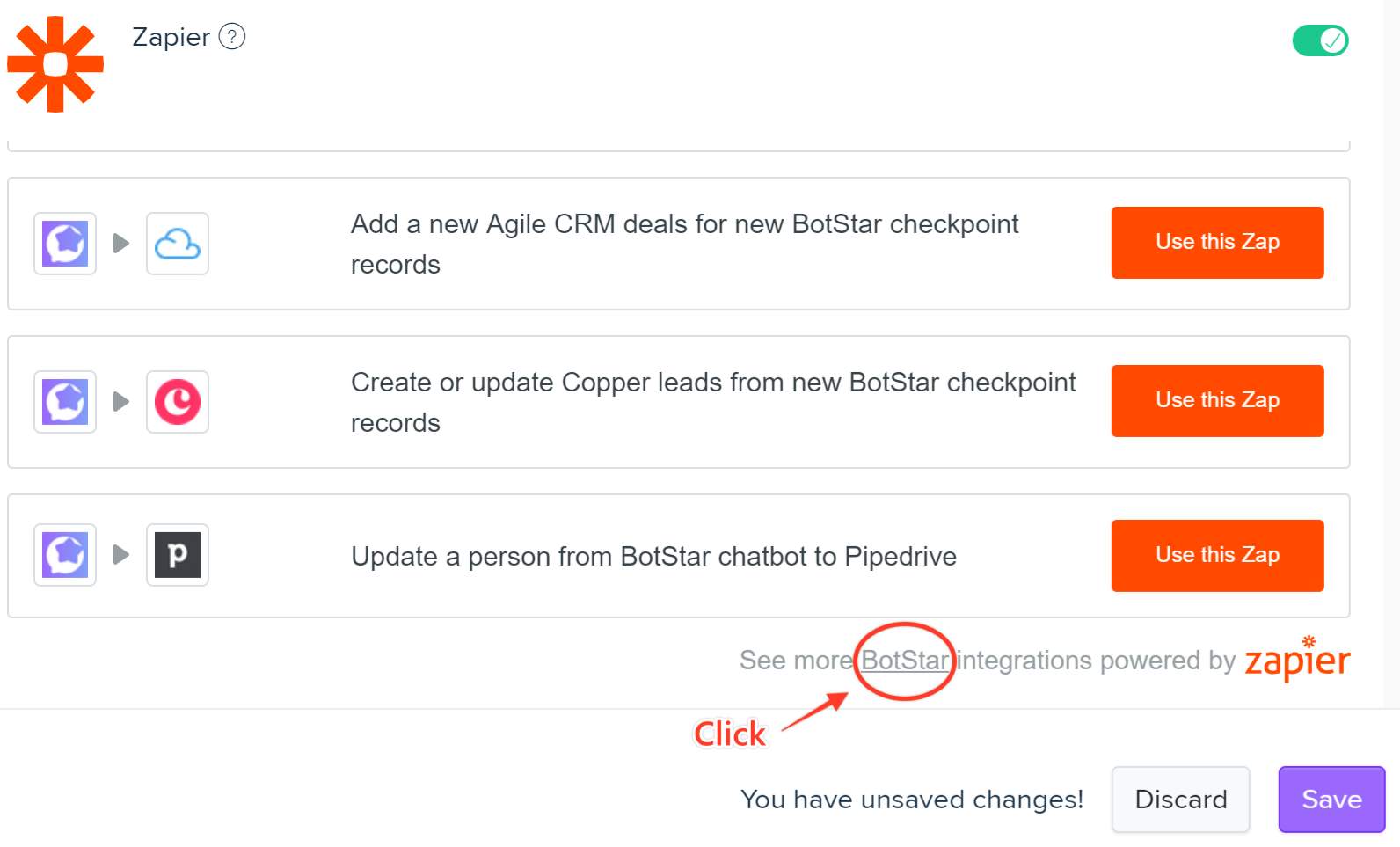Integrate your chatbot with Mailchimp
MailChimp is a software that lets you stay in touch with groups of people via email. You can send newsletters to the people who’ve signed up for your mailing list.
This article will show you how to connect Mailchimp with BotStar through Zapier. There are 5 Triggers that we are supporting at the moment: New Checkpoint Record, New Subscriber, Updated User Attribute, New Request for Human Takeover, New Tag on User. For more information, please see Zapier before continuing this tutorial.
Here's a diagram of BotStar and Mailchimp integrations:
 As shown in the diagram above, when a chatbot receives input from chat users, Zapier can create automation between apps by using Triggers and Actions. The Trigger is the event in an app that starts the Zap. The Action is the event that completes a Zap.
As shown in the diagram above, when a chatbot receives input from chat users, Zapier can create automation between apps by using Triggers and Actions. The Trigger is the event in an app that starts the Zap. The Action is the event that completes a Zap.
In just a few minutes and without coding, Zapier supports you to integrate BotStar and Mailchimp easily.
Note: This tutorial assumes that you already have BotStar account, Zapier account and Mailchimp account.
Set up Checkpoint
In this tutorial, we will guide you step-by-step on how to transfer data from your BotStar chatbot to Mailchimp.
The idea is to collect data from a deal submitted by your users to Checkpoint records and transfer them to Mailchimp. If you don’t know much about this feature, learn more about Checkpoint before continuing on this tutorial.
Connect to Mailchimp through Zapier
Expected result
After completing the connection between your chatbot and Mailchimp. Now you can chat with the bot and let the conversation run through the flow using Checkpoint to test the integration.

Here is a list of subscribers in Mailchimp:

Setting up the integration
1. Enable Zapier in BotStar
Go to Bot Builder > Integrations in your Bot and enable Zapier and click BotStar in "See more BotStar integrations powered by Zapier"

Then go to Zapier and choose BotStar as a Trigger App to create your Zap.

2. Select Trigger
Select BotStar Trigger New Checkpoint Record and click Continue

3. Link the bot
If you don't have any existing account chatbot, click Connect an Account to create a new one. All your connected accounts will show up here, choose one of your chatbots, and click Connect. You can also select from an existing account.

Next press Test button to test your connection, it will turn into a green Success button. Then click Save + Continue.
4. Setup BotStar Record
You will set up “Environment”. There are two types of Environment:
- Live: Data generated by real users from live platforms
- Test: Data generated via local testing (Preview) in BotStar
Then select the Checkpoint you want this trigger to listen to. For example, select Checkpoint as Saving order (You need to select at least one checkpoint in BotStar App).

Choose a sample to set up your Zap. Click Continue to complete Trigger settings

5. Choose an Action App
Type Mailchimp in the search bar and then choose Mailchimp as an Action App

6. Select Action
Select Mailchimp Action Add/Update Subscriber and click Continue

7. Verify your Mailchimp account
Verify your Mailchimp account. Create a new one by click Connect an Account if you don't have any existing account.

Next, choose a Mailchimp account and press Test button, it will be turned into a green Success button. Then click Save + Continue.
8. Set up Template
Match the sample information from Checkpoint corresponding to the columns in the table

9. Test Mailchimp
After setting up the template for Mailchimp, the application requests you to test.

10. Turn on your Zap
Toggle the ON/OFF button to ON. Your Zap will run automatically from now until you turn it OFF. Your Zap is working! Suggest that you can set a name for your Zap.
Congratulations! Finally, you completed the integration between your chatbot and Mailchimp application. Now, you can test the success of integration by chatting with the bot and see the result of successful integration. Also, you can edit the steps or change specific details at any time by finding all of your Zaps on your My Apps page.